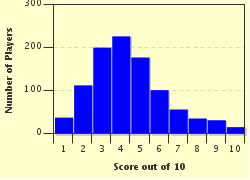Quiz Answer Key and Fun Facts
1. Chemistry
Diffusion is the constant and random movement of particles (molecules, atoms, ions) in which direction?
2. Anatomy
The human heart is found within which compartment in the thoracic region?
3. Cell Biology
Which of these cellular processes DOES NOT occur in the cytoplasm of the cell?
4. Physiology
In a nerve cell, what is the difference between the charge inside the cell and the charge outside the cell at its resting state?
5. Histology
This is the hardest working muscle in the body.
What is its muscle tissue called?
(It is known to be striated, sometimes binucleated, branching, and contains intercalating disks.)
6. Embryology
Oocytes are developing egg cells found in the ovaries. They are surrounded by follicular cells.
In a matured Graafian follicle, what is this clear / transparent layer found immediately outside the oocyte?
7. Biochemistry
Hemoglobin is a globular protein with 2 alpha and 2 beta sub-units. Hemoglobin is responsible for carrying oxygen and delivering them to different parts of the body.
How do you describe hemoglobin as a structure (containing 4 sub-units)?
8. Invertebrate Zoology
The Plasmodium species (the protozoan that causes malaria) has a complicated life cycle. It reproduces sexually and asexually. It also has two hosts, namely the Anopheles mosquito and human beings.
What kind of host is the Anopheles mosquito?
9. Plant Physiology
Cacti (singular cactus) make use of the Crassulacean Acid Metabolism (CAM) photosynthesis. In this kind of photosynthesis, the stomata on the leaves are opened only during night time (to conserve water loss during day time). This is the only time carbon dioxide can go inside the leaves. But the leaves cannot perform photosynthesis without sunlight.
Therefore, carbon dioxide first is stored in the leaves as _________________ .
10. Genetics
A normal male individual has an XY chromosome and has functional testes.
A normal female individual has an XX chromosome and has functional ovaries.
In Turner's syndrome or gonadal dysgenesis, there is a failure to form a functional gonad (either a testis or ovary).
What kind of sex chromosome does a person exhibiting Turner's syndrome have?
Source: Author
AlvarezMD
This quiz was reviewed by FunTrivia editor
crisw before going online.
Any errors found in FunTrivia content are routinely corrected through our feedback system.

